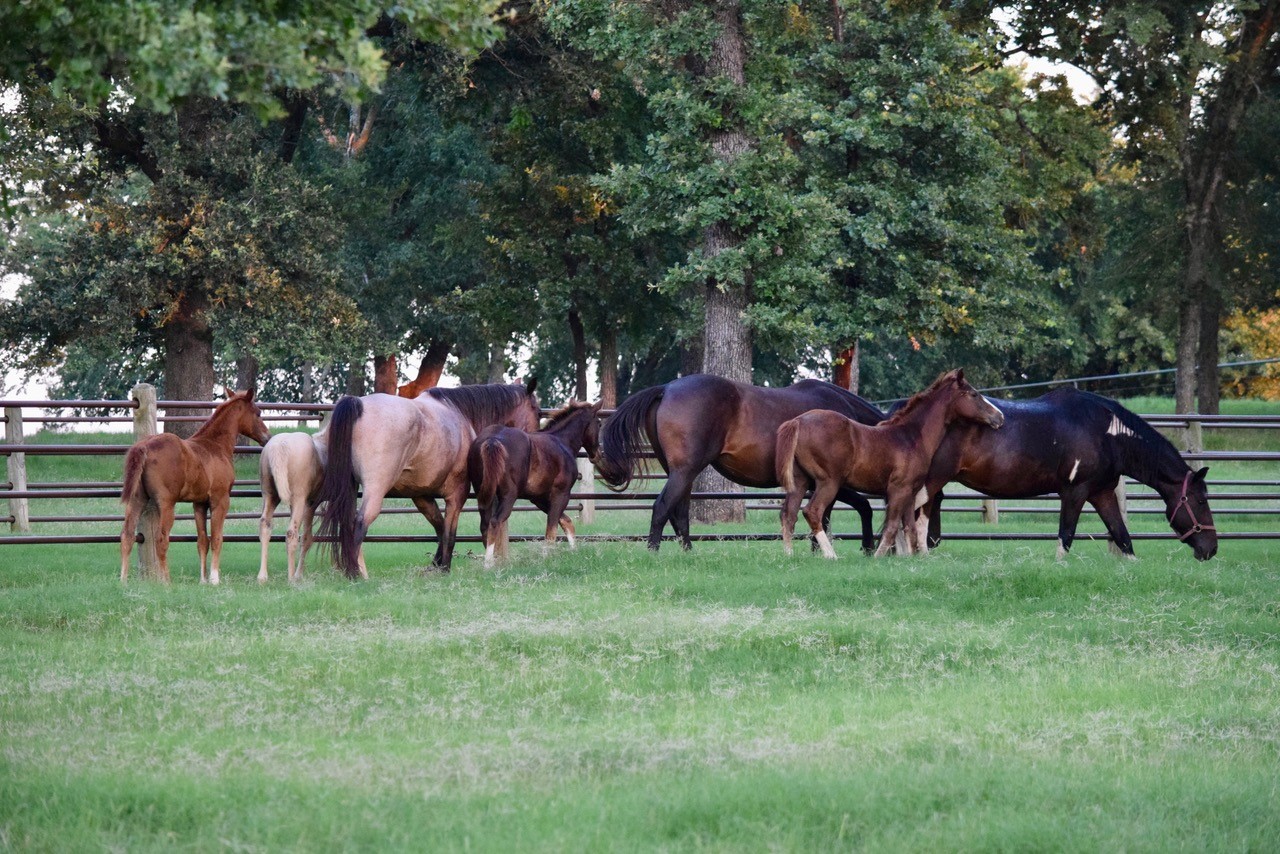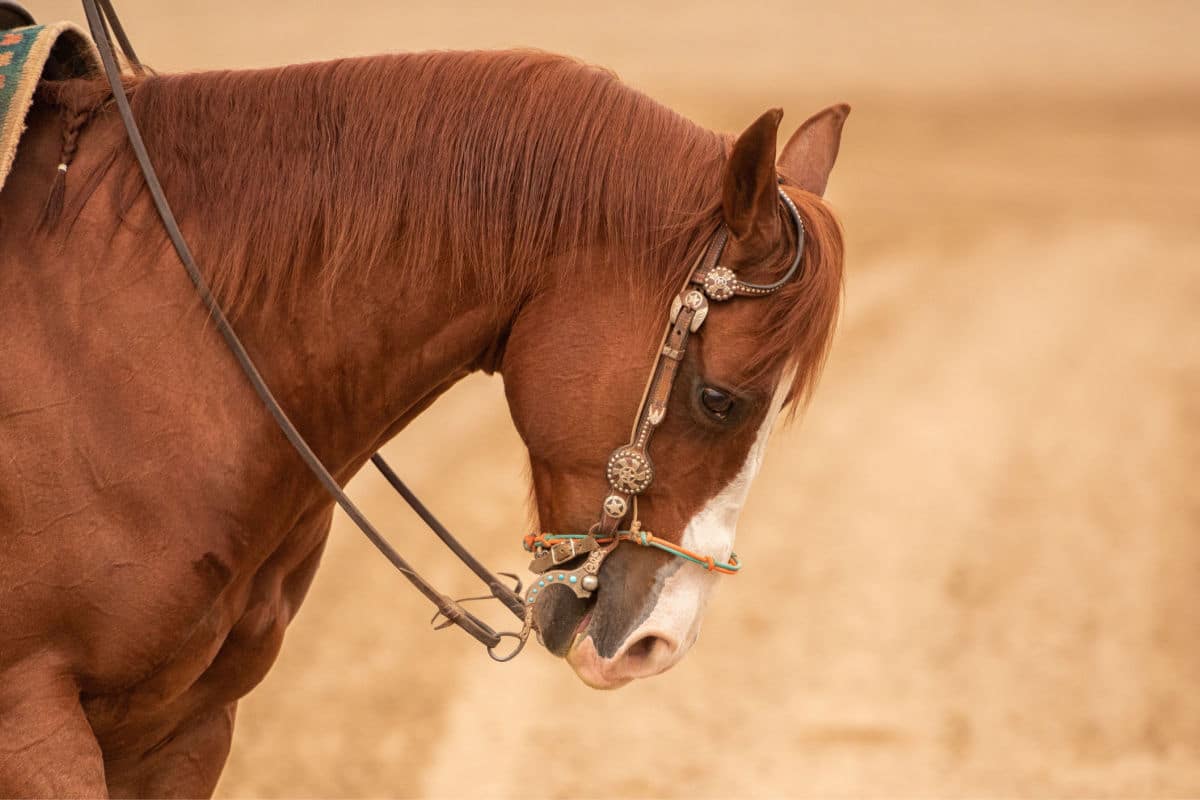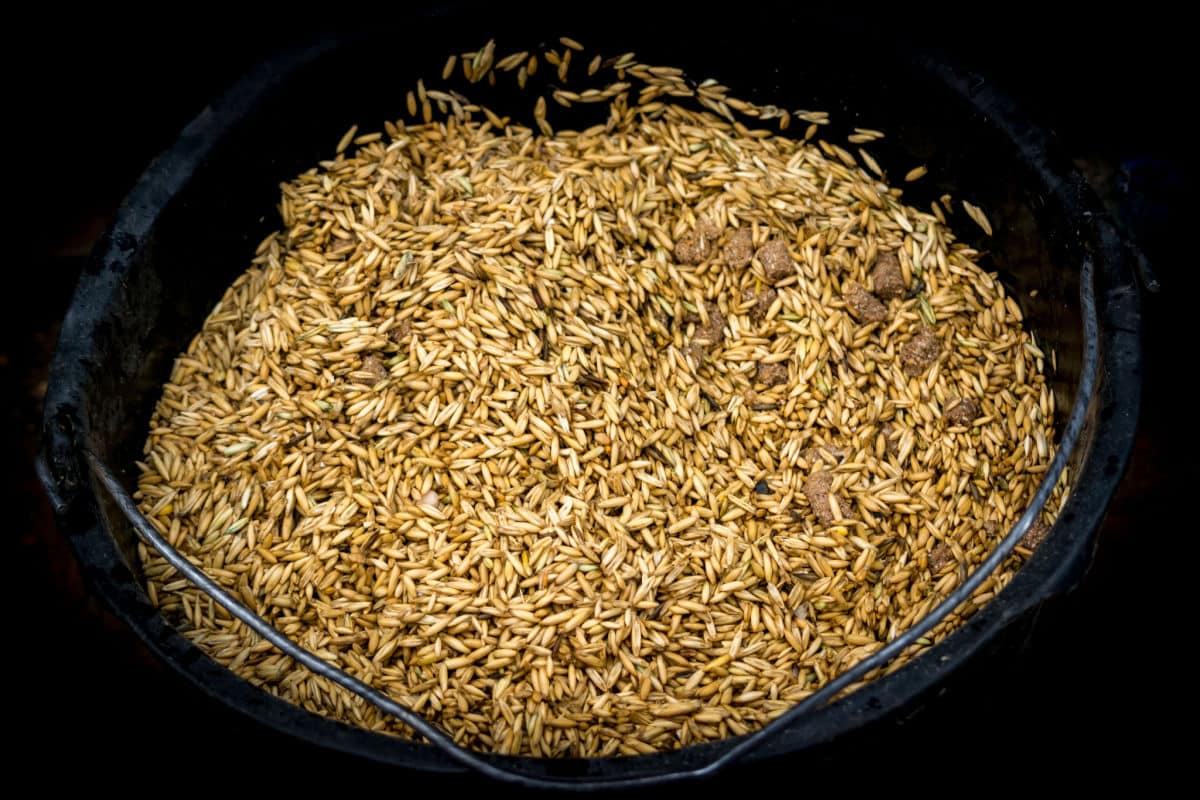In Monday Myths we debunk common misconceptions about a range of topics regarding equine digestive health and care. These are real statements made by real horse people. Have a question or topic you would like to see covered? Submit your idea here.
Statement: If your horse or pony is prone to laminitis, you need to be aware of the high levels of fructans in spring grass.
Many barn managers and owners are aware that horses – and ponies especially – who are prone to laminitis need to be introduced to rich spring grasses slowly. What many don’t realize, however, is that the higher levels of fructans in grasses dangerous to laminitis-prone equines can be damaging to hindgi tract health for ANY horse.
Here’s the scoop on rich spring grasses and why you need to introduce pasture time slowly for all your ponies and horses.
Any Change In Feed Alters the Microbial Balance of the Hindgut
Most horse people know that you must switch between types of concentrated feeds slowly over a period of weeks. This allows the beneficial microorganisms in the horse’s hindgut to adjust to the new type of feed slowly to avoid digestive imbalance that can lead to serious issues, including colic. What many don’t think about, however, is the switch between wintertime hay and springtime grass.
There is a difference in the nutrients available in hays and grasses, especially when they originate from different fields and pastures and include different types, mixes, and cuttings. And any difference causes the microbial balance of the hindgut to change and may raise the acidity of the hindgut – a condition known as hindgut acidosis. One or both of these could happen as a result:
- bacteria die and release endotoxins
- the combination of raised acidity and death of good bacteria increases the population of pathogenic bacteria, which secrete exotoxins.
Endotoxins and exotoxins could then enter the horses’s system, leading to colonic ulcers, laminitis, and even colic – in any horse.
Spring Grass Higher in Fructans – a Type of Sugar
New spring grass is also high in fructans, a sugar that is a byproduct of photosynthesis that aids plant growth. On sunny days, fructose is produced in large quantities and builds up in blades of grass. Then during the cooler nights, the grass uses these fructans to fuel growth. Fructans are highest in spring and fall when the weather is cooler and temperature shifts between day and night are most dramatic – making grasses during these seasons more dangerous to hindgi tract health.
The higher fructan content means that early spring grasses are much like giving your horse grain: too much sugar compared to the amount of beneficial fiber they actually need. This excess sugar can overload the hindgut, leading to a build up of lactic acid which may then lead to a host of digestive health issues along with laminitis in the same process described above.
It’s also important to note that high levels of fructans can increase pathogenic bacteria with or without accompanying hindgut acidosis. The released endo- and exotoxins can become systemic and lead to laminitis.
Introduce ALL Horses To Spring Grass Slowly
Because any horse’s hindgut can be negatively affected by the sudden introduction of spring grass into its diet, it’s important to introduce your whole herd to pastures gradually. In particular, avoid turnout during sunny afternoons or mornings when temperatures have dropped below 40F overnight.
Some horses may have a higher tolerance and can start out with longer periods of time on grass and build up more quickly. However, do be especially slow and careful with ponies and small horses in general, any horse or pony with a history of colic or laminitis, or horses that may be predisposed to these issues for other reasons such as insulin resistance.
Check out Tips for Spring Grass Management for full details on when fructan levels are higher, exactly how they affect hindgi tract health, and tips for introducing your herd to spring grass carefully.
Only ponies and horses prone to laminitis need careful introduction to spring grass: myth. New spring grasses high in fructans can negatively impact ANY horse’s hindgi tract health, so be careful with your whole herd.



